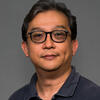Research Interests
We are currently carrying out two lines of translation-oriented research using clinically relevant mouse models, aiming to restore motor and sensory functions after peripheral nerve injury or spinal cord root injury. Although it is commonly believed that the peripheral nerve regenerates, recovery from human nerve injuries typically takes months to years, and is incomplete in >90% of cases. The poor functional recovery in humans is primarily because peripheral axons fail to regenerate over long-distances. Moreover, injuries in dorsal root sensory nerves almost certainly lead to the loss of sensation, because sensory axons fail to regenerate into spinal cord. In the first line of research, we aim to promote long-distance regeneration and enable regenerating nerves to reach peripheral targets such as muscles. Our approach is to prevent or reverse the atrophy of Schwann cells, which lose the ability to support axon regeneration over time after injury. For the second line of research, we are studying a novel mechanism that prevent regeneration of sensory nerve into spinal cord, while developing unprecedently-effective and translatable treatments to enable robust, long and target-specific regeneration of sensory axons within the spinal cord. Our laboratory is among the few that study regeneration of peripheral nerves both peripherally and centrally. We represent the only group capable of applying in vivo time-lapse imaging in studying dorsal root regeneration. In addition, the techniques that our group utilizes, such as wide-field and multiphoton in vivo imaging, inducible/conditional transgenic mice, virus-mediated in vivo transduction, and tissue-clearing such as CLARITY are rarely used in the study of dorsal root or peripheral nerve regeneration. Importantly, we use combinations of these methods in novel ways to correlate in vivo imaging with light and ultrastructural analyses and elucidate critically important issues that previous static analyses could not decipher. We hope that our work will lead to novel therapeutic strategies to promote repair of spinal cord-muscle connections in patients with neuromuscular, spinal cord or spinal root injury.
Education, Training & Credentials
- Postdoctoral Fellowship, Department of Physiology and Biophysics, University of Washington School of Medicine, Seattle, WA, 2000
- Postdoctoral Fellowship, Department of Anatomy and Neurobiology, Washington University School of Medicine, St. Louis, MO, 1998
- PhD, Neuroscience, University of Texas, Austin, TX, 1994
- BS, Biology, Korea University, Seoul, Korea, 1988
Honors & Awards
- Society for Neuroscience
- Society for Cell Biology
- Peripheral Nerve Society

